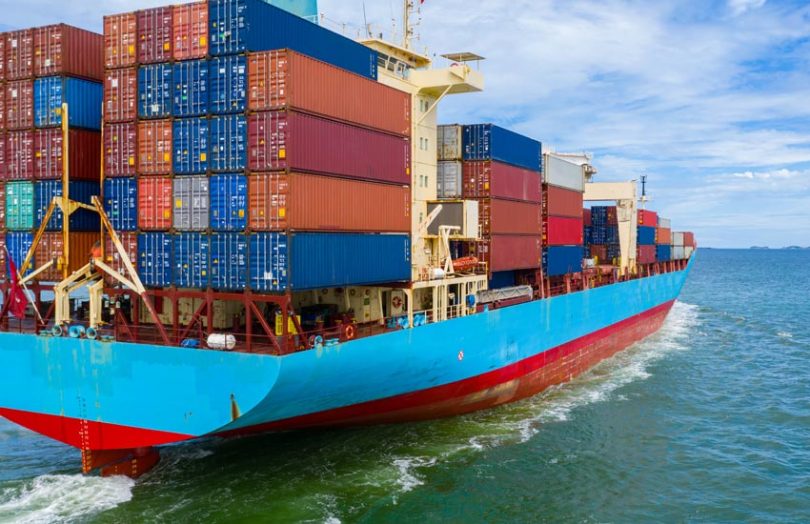Nine months ago, we wrote that Singapore startup dltledgers had processed more than $1 billion in trade finance via its blockchain platform. That figure has now passed $3.3 billion since the platform launched 18 months ago.
Dltledger’s core solution is a supply chain traceability blockchain that links to banks, shipping and transport firms as well as insurers. A key reason for its success is the efficiencies it brings by digitizing cross border trade.
Because there’s greater visibility into the supply chain, there’s less risk for banks. Agrocorp, a major agribusiness trader ($3.3 billion revenues), reckons it saves 15-20% on its trade financing costs. When dltledgers processed its first billion, Agrocorp accounted for about 10% of its transactions. Thousands of Australian farmers were onboarded by the agribusiness firm to enable traceability for supermarkets.
Others point to the time saving benefits. Another agribusiness client, IFFCO ($3 billion revenues), says import/export transactions take three hours to complete using dltledgers, compared to ten days for paper-based processes.
Currently, dltledgers processes $300 – $400 million in trade finance per month, involving about 200 trade flows. Clients provide figures because dltledgers doesn’t have visibility into the transactions. The sizeable average transaction size is because of the focus on commodities, including agribusiness, energy, metals and minerals, as well as merchandise trade.
So far, it has signed up more than 390 companies with 45 banks including ANZ, ADCB, DBS, TDB, Standard Chartered and ICICI Bank. To date, the company has raised just $2.5 million in a pre-Series A round.
The solution has a freemium model with the first three trades free. After that, costs start at $2,500 per month for up to five monthly trades and $20,000 for unlimited trades. Longer term, the company is interested in a pay as you go model and it says it’s still experimenting to find charging models that work best for all parties.
A lighthouse approach versus a consortium
During a recent Hyperledger presentation, dltledgers co-founder Atul Patel acknowledged the importance of attracting its first two big clients, Agrocorp and DBS Bank. “It really required quite a bit of vision from both of those companies to collaborate with a fintech like us,” said Patel.
He continued: “They introduced us to places that may not be helpful to their own business. It’s about how they can provide better customer service to their customers.”
Landing those first clients is the challenge. “To really convince the first guy in the chain is extremely difficult, but the second guy is relatively easier,” and it continues to get easier said Patel.
So the strategy was to start with a substantial client in each sector rather than building a consortium. The speed of adoption is critical. “If I can do the shipments and transactions in a way which I can (get it) adopted faster, with an easy to use application, that will drive more momentum than having a collaborative play,” said Patel.
In the agribusiness sector, the six biggest players – ADM, Bunge, Cargill, COFCO, Louis Dreyfus Co and Glencore Agriculture – recently incorporated their consortium as Covantis. Patel views this as an opportunity to work with them and counts some of its members as clients. “The world has over 700,000 traders and lots of them are mid-size organizations coming from emerging or developing parts of the world,” Patel told Ledger Insights.
In trade finance, there are four big consortia in the West, and numerous platforms in Asia, especially China. Of the big four, two are in production with clients. We.trade currently targets the SME end of the market, and komgo focuses on commodities. Komgo, which is targeting the oil sector for now, has passed the billion-dollar mark, but not as quickly as dltledgers. Contour (formerly Voltron) and Marco Polo have yet to go live with clients.
But even dltledgers’ volumes are dwarfed by China. A platform led by China Construction Bank shot past the $50 billion mark several months ago. And a central bank-led consortium, Bay Area Trade Finance Blockchain, is well above the $10 billion mark.
There’s a critical difference with dltledgers. It’s a supply chain play with trade finance. Whereas banks drive all the big trade finance plays. When Standard Chartered recently spoke about its wide array of blockchain activities, it forgot to mention dltledgers, even though it published press releases about its involvement. That’s because its dltledgers participation is driven by its clients such as Agrocorp and IFFCO.
So the question is when the bank platforms get traction, could that pose a threat to dltledgers? Or likely, dltledgers will integrate with bank platforms.
Usability means accessibility
Apart from attracting the first client, the other challenge is making the solution accessible. It’s one thing working with tech-savvy large clients. It’s another developing software for the mobile phones used by farmers and smallholders, which Patel described as “digitally poor natives”.
“So the UX (user interface) is different for those guys. The challenges have been in looking at the actor in the chain and what he would need to do his task effectively,” said Patel. “And the less we tell him about blockchain, the better it is because he doesn’t care about it. But at the end of the day, if we don’t have his authenticated immutable information in the chain, I can’t prove the traceability and provenance on the other side.”
Getting technical
Patel’s talk was a presentation to the Hyperledger community. Dltledgers claims to have one of the largest deployments in Asia of the Hyperledger Fabric enterprise blockchain, with a network of more than 500 nodes. It says it achieves 2,000 transactions per second.
While the company may process just 200 shipments per month, each shipment will average 80 blockchain transactions, which still isn’t a huge amount of volume. “It’s about 2,000 TPS (transactions per second) as of now, which is more than enough to satisfy the volumes on a B2B (network). But if we go into a lot of B2B2C then we need to get to close to 40,000.”
We asked for clarification about the B2B2C reference, and from Patel’s response, we believe he means the ability for end consumers to trace back to the source.
A feature of Fabric is channels, which are like mini blockchains restricting access to only those that are permissioned. Dltledgers developed its own scaling solution to allow channels to be created dynamically based on the trade transaction.
In terms of how the solution works, it manages the execution of the transactions, including contracts, commercial documents like purchase orders and invoices, shipping documents, and others such as quality and inspection certificates. The files themselves are not on the blockchain, rather a fingerprint or hash, with the documents stored in an off-chain database.
Given it deals with payments to farmers and smallholders, dltledgers has an API with payment processing providers, so the payments large and small can be initiated directly from the platform.
Ultimately the benefit that dltledgers offers is a simple one: digitization. But that’s also an advantage to the company as it scales. “Network effects with a solid underlying platform is really driving our success without us being in all these places to physically drive it,” said Patel.






